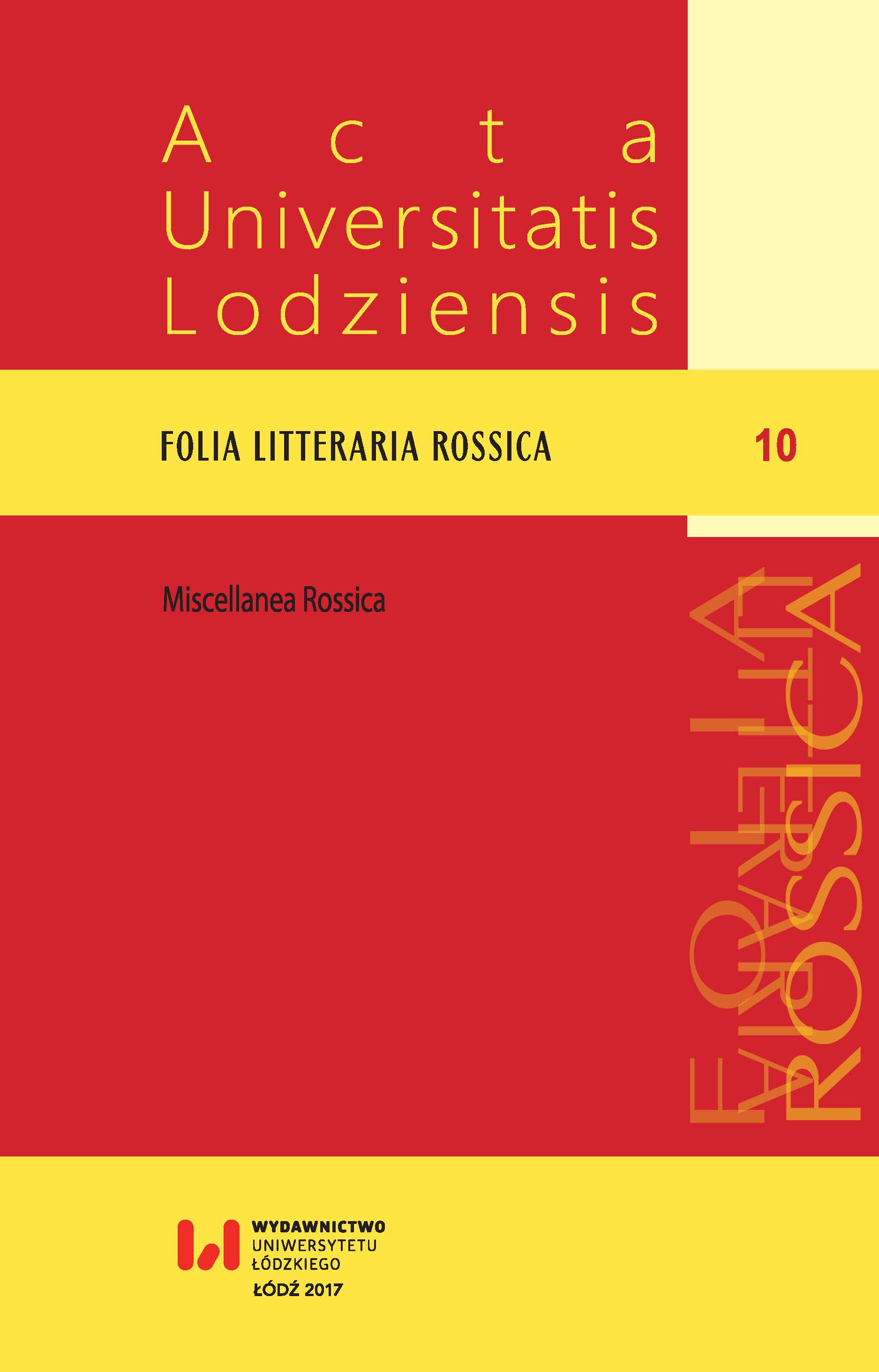Художественные функции образа матери в творчестве Михаила Булгакова (на примере избранных произведений)
DOI:
https://doi.org/10.18778/1427-9681.10.06Słowa kluczowe:
Михаил Булгаков, Белая гвардия, мотив матери, гражданская война в Киеве 1918–1919, автобиографические мотивыAbstrakt
В творчестве Булгакова образ матери и проблемы материнства появляются крайне редко. Возможно, это связанно с тем, что у писателя никогда не было собственных детей, хотя он был три раза женат и рос в многодетной семье. Булгаков был самым старшим ребенком и остальные братья и сестры воспитывались на его глазах и с его помощью после смерти отца, который скончался в возрасте 48 лет. Автор Мастера и Маргариты создал много необыкновенных и трогательных образов любовниц, женщин, страдающих из-за любви, готовых посвятить себя и даже свою жизнь любимому мужчине. Одним из самых прекрасных и наиболее известных образов матери является образ матери семьи Турбиных в романе Белая гвардия. Ее прототипом была мать писателя – Варвара Михайловна в девичестве Покровская (1869–1922). Роман начинается с ее болезни и смерти, что является предвещанием трагических событий и страданий, которые ожидают ее детей во время гражданской войны. В Мастере и Маргарите на балу сатаны появляется душа матери-убийцы только что рожденного ребенка, в драме о Мольере изображена мать-предательница, которая на предсмертной исповеди выявляет тайну рождения своей дочери, чем уничтожает ее семью. На фоне этих образов матерей мать Турбиных является женщиной идеальной, поэтому писатель определяет ее как «светлую королеву». Этот образ становится своеобразным ключом к пониманию сущности образов молодых Турбиных, которые унаследовали у своей матери нравственный кодекс и способность жертвовать собой ради других.
Pobrania
Bibliografia
Bulgakov, Mikhail. Belaya gvardiya. In: Sobranie sochineniy: v 8-i tt. Vol. 1. Moskva: Astrel, 2008.
Google Scholar
Bulgakov, Mikhail. Master i Margarita. In: Sobranie sochineniy: v 8-i tt. Vol. 7. Moskva: Astrel, 2007.
Google Scholar
Bulgakov, Mikhail. Molier. In: Sobranie sochineniy: v 8-i tt. Vol. 5. Moskva: Astrel, 2010.
Google Scholar
Bulgakov, Mikhail. Pismo ot 17 yanvarya 1921 g. V. M. Voskresenskoy-Bulgakovoy i N. A. Zemskoy. In: Sobranie sochineniy: v 8-i tt. Vol. 8. Moskva: Astrel, 2007: 29–30.
Google Scholar
Bulgakov, Mikhail. Pismo ot 23 yanvarya 1923 g. V. A. Bulgakovoy. In: Polnoe sobranie sochineniy: v 8-i tt. Vol. 8. Moskva: Astrel, 2007: 44.
Google Scholar
Mat pisatelya Mikhaila Bulgakova. Genialnye Materi Planety. http://www.proza.ru/2015/09/06/122
Google Scholar
Sokolov, Boris. Bulgakov. Entsiklopediya. Moskva: Eskimi, Algoritm, Oko, 2007.
Google Scholar
Sokolov, Boris. Prototipy „Beloy gvardii”. http://rulibs.com/ru_zar/nonf_criticism/sokolov/0/j3.html
Google Scholar
Sokolov, Boris. Rasshifrovannaya „Belaya gvardiya”. Tayny Bulgakova. http://rubooks.org/book.php?book=1386&page=29
Google Scholar
Stepnowska, Tatiana. Oślepiająca bezsilność. Obraz Moliera w twórczości Michaiła Bułhakowa. Łódź: Primum Verbum, 2013.
Google Scholar
Tinchenko, Yaroslav. Zhenskiy obraz v romane „Belaya gvardiya”. In: „Belaya gvardiya” Mikhaila Bulgakova. Kiev–Lvov: Missioner, 1997. http://litresp.ru/chitat/ru/T/tinchenko-yaroslav-yurjevich/belaya-gvardiya-mihaila-bulgakova/15
Google Scholar
Yanovskaya, Lidiya. Tvorcheskiy put Mikhaila Bulgakova. Moskva: Sovetskiy pisatel, 1983.
Google Scholar
Zemskaya, Yelena. Iz semeynogo arhiva. Materialy iz sobraniya N. A. Bulgakovoy-Zemskoy. In: Vospominaniya o Mikhaile Bulgakove. Moskva: Sovetskiy pisatel, 1988.
Google Scholar












